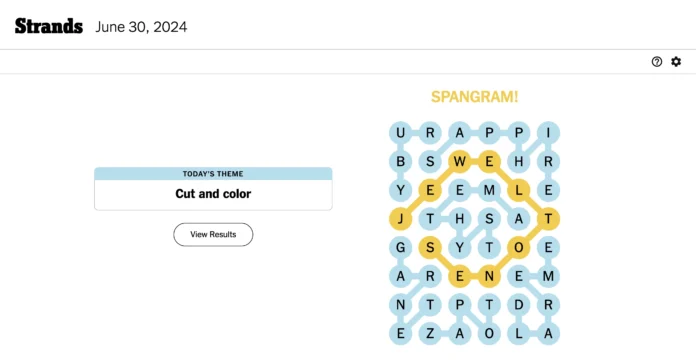Ever wondered what makes some answers stick in your mind while others fade away? That’s the magic of “strands answers.” These answers, rooted in educational frameworks, weave together essential concepts into a cohesive understanding. But why are they so important? Let’s unravel this thread together.
Understanding Strands in Education
Definition of Educational Strands
Educational strands are like the threads of a tapestry, each representing a specific area of knowledge within a subject. Together, they create a structured pathway for learning.
Examples of Common Strands in Curricula
In mathematics, strands might include algebra, geometry, and statistics. In language arts, they could cover reading comprehension, writing skills, and oral communication.
Role of Strands in Conceptual Clarity
Strands act as building blocks, ensuring that learners grasp fundamental concepts before moving on to advanced topics.
The Power of Strands Answers
How Strands Answers Improve Comprehension
By addressing each strand individually, learners can focus on specific concepts without feeling overwhelmed.
Building Connections Between Concepts
Strands answers highlight the relationships between ideas, making learning a more integrated experience.
Examples from Real-Life Applications
Consider a science lesson on ecosystems. Strands answers could connect food chains, energy flow, and environmental impact seamlessly.
Why Strands Answers Are Essential
Simplifying Complex Ideas
Strands answers break down intricate problems into manageable parts, much like solving a puzzle piece by piece.
Promoting Critical Thinking
By encouraging learners to analyze and synthesize information, strands answeres pave the way for deeper understanding.
Encouraging Collaborative Learning
When students share and discuss strands answers, they benefit from diverse perspectives and insights.
Crafting Effective Strands Answers
Breaking Down the Question
Understand what’s being asked and identify the strands it involves.
Identifying Key Concepts
Pinpoint the core ideas that need to be addressed.
Structuring the Answer Logically
Organize your response in a way that flows naturally and covers all strands.
Tips to Enhance Your Strandes Answers
Practice Active Reading
Engage with the material by questioning, summarizing, and predicting as you read.
Engage in Group Discussions
Sharing ideas with peers can reveal new angles and insights.
Utilize Technology and Tools
Use apps, online platforms, or visual aids to better understand and organize strands.
Challenges in Understanding Strands Answeres
Misinterpretation of Concepts
Without proper guidance, learners may confuse or mix up strands.
Overloading with Information
Too much detail can muddy the clarity of strandes answers.
Lack of Contextual Understanding
Answers without real-world relevance may fail to resonate with learners.
Overcoming the Challenges
Clear Communication Strategies
Simplify your language and use examples to illustrate points.
Regular Feedback and Assessment
Review and refine strands answerss to ensure accuracy and clarity.
Leveraging Resources Effectively
Access books, videos, and other materials to deepen your understanding of strands.
Real-World Implications of Strands Answers
Impact on Problem-Solving Skills
Strands answerss teach learners to approach problems methodically.
Relevance in Professional Settings
From project planning to data analysis, strands answers have countless applications.
Contribution to Lifelong Learning
The ability to organize and connect information is a skill that benefits every stage of life.
Conclusion
Strands answerss are more than just an educational tool—they’re a framework for understanding the world. By breaking down complex ideas, fostering critical thinking, and encouraging collaboration, they pave the way for academic and professional success. So, why not start weaving your own strands of knowledge today?
FAQs
What are strands answers in simple terms?
Strands answers are responses that organize and connect key ideas within a topic, making them easier to understand.
How can strands answerse benefit students?
They simplify learning, promote critical thinking, and help build connections between concepts.
What is the difference between strands and topics?
Strands are subcategories within a topic, each focusing on a specific aspect of the subject.
How can teachers use strands answers effectively?
Teachers can use them to structure lessons, assess understanding, and encourage deeper discussions.
Are strands answerss applicable outside education?
Absolutely! They’re useful for problem-solving, planning, and effective communication in various fields.
You May Read This Blog Also Google Pixel Fold



